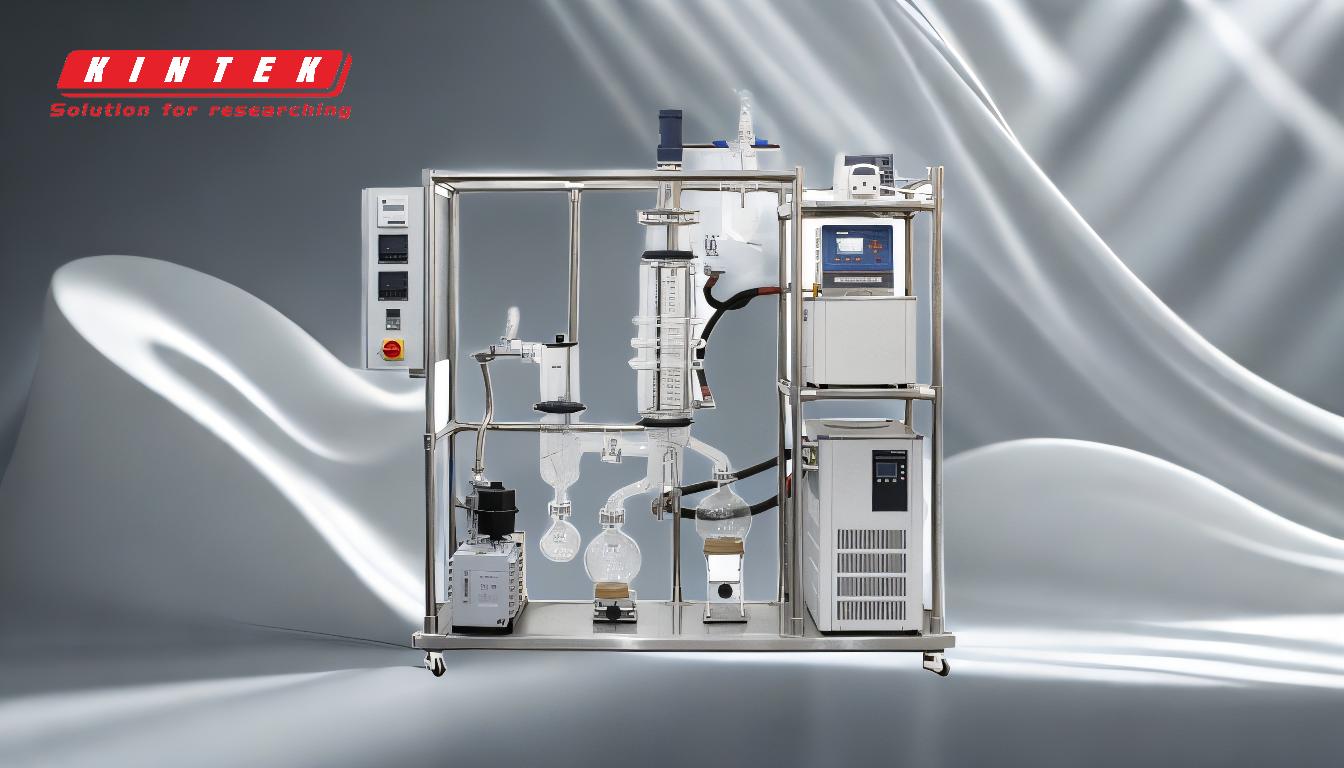Distillation of essential oils is a critical process in extracting pure and concentrated aromatic compounds from plant materials. The methods vary based on the desired purity, the type of plant material, and the scale of production. Common methods include simple distillation, fractional distillation, steam distillation, vacuum distillation, and short path distillation. Each method has unique advantages and applications, with equipment like rotary evaporators, wiped film stills, and molecular short-path stills being commonly used. The choice of method depends on factors such as the volatility of the compounds, the need for purity, and the sensitivity of the materials to heat.
Key Points Explained:

-
Simple Distillation:
- Process: Involves heating a liquid mixture to its boiling point, allowing the vapor to condense and separate into its components.
- Application: Suitable for separating liquids with significantly different boiling points.
- Equipment: Basic distillation setups with a heating source, condenser, and collection vessel.
- Advantages: Simple and cost-effective for small-scale operations.
- Limitations: Less effective for separating components with close boiling points.
-
Fractional Distillation:
- Process: Similar to simple distillation but uses a fractionating column to allow multiple vaporization-condensation cycles, improving separation.
- Application: Widely used in petroleum refining and chemical industries for separating complex mixtures.
- Equipment: Includes a fractionating column, which enhances separation efficiency.
- Advantages: Higher purity and better separation of components with closer boiling points.
- Limitations: More complex and expensive than simple distillation.
-
Steam Distillation:
- Process: Involves passing steam through plant material to vaporize the essential oils, which are then condensed and collected.
- Application: Ideal for heat-sensitive materials, commonly used in extracting essential oils from flowers, leaves, and herbs.
- Equipment: Steam generators, condensers, and separators.
- Advantages: Gentle on heat-sensitive compounds and effective for large-scale extraction.
- Limitations: Requires careful control of steam temperature and pressure.
-
Vacuum Distillation:
- Process: Conducted under reduced pressure to lower the boiling points of the components, minimizing thermal degradation.
- Application: Suitable for heat-sensitive and high-boiling-point compounds, often used in laboratories and specialty chemical production.
- Equipment: Rotary evaporators and vacuum pumps are commonly used.
- Advantages: Reduces thermal degradation and allows distillation of high-boiling-point compounds.
- Limitations: Requires specialized equipment and careful pressure control.
-
Short Path Distillation:
- Process: A single-stage distillation method where the vapor travels a short distance before condensing, minimizing exposure to heat.
- Application: Used for purifying high-value compounds, such as essential oils and cannabinoids.
- Equipment: Wiped film and molecular short-path stills.
- Advantages: High purity and minimal thermal degradation.
- Limitations: Limited to small-scale operations and requires precise temperature control.
-
Wiped Film Distillation:
- Process: A type of short path distillation where a thin film of the liquid is wiped across a heated surface, enhancing evaporation efficiency.
- Application: Suitable for viscous and heat-sensitive materials.
- Equipment: Wiped film evaporators.
- Advantages: High efficiency and reduced thermal degradation.
- Limitations: Complex setup and higher operational costs.
-
Zone Distillation:
- Process: Involves creating a temperature gradient along a column, allowing selective condensation of components based on their boiling points.
- Application: Used for purifying metals and high-purity chemicals.
- Equipment: Zone refining apparatus.
- Advantages: High purity and precise separation.
- Limitations: Limited to specific applications and requires specialized equipment.
Each distillation method has its unique advantages and limitations, making it essential to choose the appropriate technique based on the specific requirements of the essential oil extraction process. Factors such as the volatility of the compounds, the need for purity, and the sensitivity of the materials to heat play a crucial role in determining the most suitable method.
Summary Table:
| Method | Process | Application | Advantages | Limitations |
|---|---|---|---|---|
| Simple Distillation | Heating liquid to boiling point, condensing vapor to separate components. | Separating liquids with significantly different boiling points. | Simple and cost-effective for small-scale operations. | Less effective for components with close boiling points. |
| Fractional Distillation | Uses a fractionating column for multiple vaporization-condensation cycles. | Petroleum refining and chemical industries for complex mixtures. | Higher purity and better separation of components with closer boiling points. | More complex and expensive than simple distillation. |
| Steam Distillation | Steam passes through plant material to vaporize essential oils. | Extracting essential oils from flowers, leaves, and herbs. | Gentle on heat-sensitive compounds and effective for large-scale extraction. | Requires careful control of steam temperature and pressure. |
| Vacuum Distillation | Conducted under reduced pressure to lower boiling points. | Heat-sensitive and high-boiling-point compounds in labs and specialty chemicals. | Reduces thermal degradation and allows distillation of high-boiling compounds. | Requires specialized equipment and careful pressure control. |
| Short Path Distillation | Vapor travels a short distance before condensing, minimizing heat exposure. | Purifying high-value compounds like essential oils and cannabinoids. | High purity and minimal thermal degradation. | Limited to small-scale operations and requires precise temperature control. |
| Wiped Film Distillation | Thin film wiped across a heated surface for efficient evaporation. | Suitable for viscous and heat-sensitive materials. | High efficiency and reduced thermal degradation. | Complex setup and higher operational costs. |
| Zone Distillation | Temperature gradient along a column for selective condensation. | Purifying metals and high-purity chemicals. | High purity and precise separation. | Limited to specific applications and requires specialized equipment. |
Ready to choose the right distillation method for your essential oil extraction? Contact our experts today for personalized guidance!









